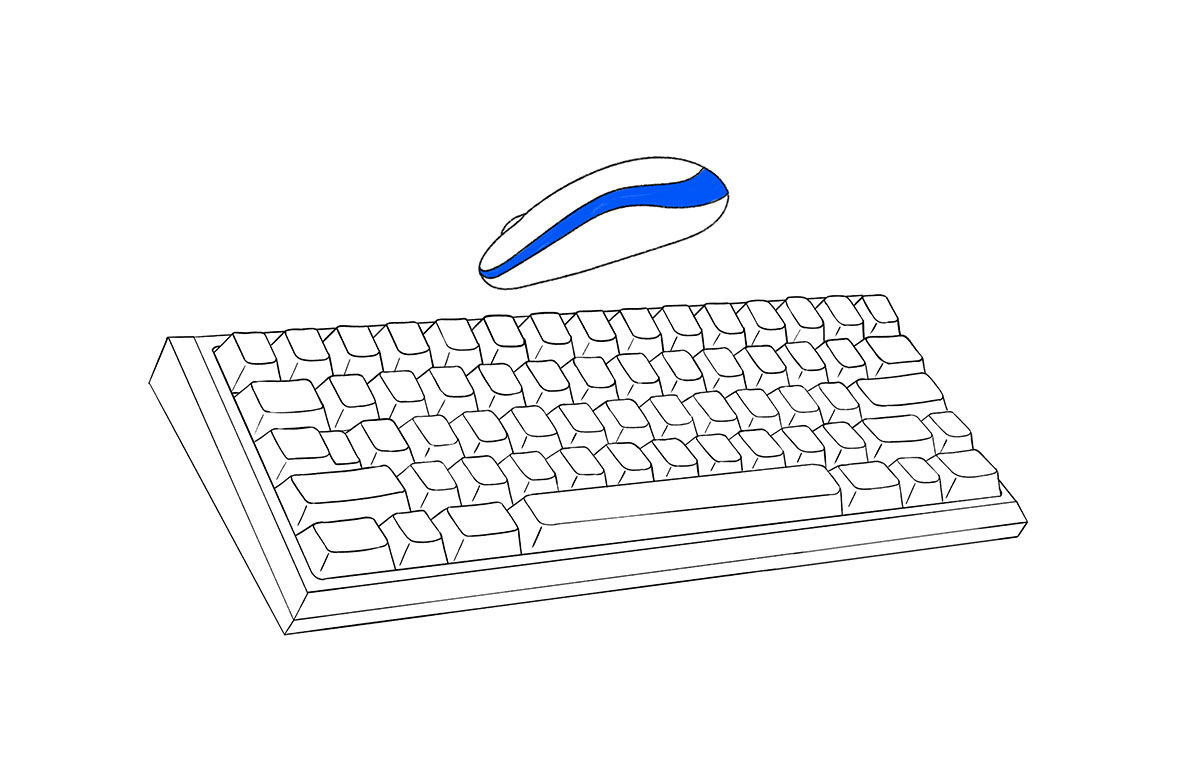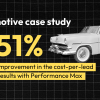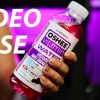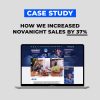
The following article is a great beginner’s guide to digital advertising. It features key concepts and metrics that help us measure and evaluate campaigns.
This page will be continuously updated with new concepts and metrics.
If you are familiar with these terms and you’d like to see something more advanced, head over to How To Use Google Reach Planner To Create Effective YouTube Campaigns. It’s a deep dive into Google’s tool for evaluating campaign reach across YouTube and TV (currently limited to Japan, Vietnam and some US markets).
Impression
This is one of the most important and foundational metrics in digital advertising. However, if we look beyond the surface, things become more complicated. There are several adjacent terms that we need to cover.
- Measurable or recordable impressions are the impressions that your 3rd party ad server platform or ad verification platform was able to measure. In other words, not all impressions can be measured for various reasons such as publisher, platform or user restrictions. As an advertiser, you need to keep an eye on the measurability rate. If it is too high, you might want to evaluate whether your media mix is appropriate.
- Viewable impressions are the impressions that your 3rd party ad server or verification tool considers “viewable”, out of all the impressions that were measured. The industry definition is that to be “viewable” at least 50% of the banner’s pixels must be in the viewable space of the browser page. However, WPP’s GroupM has a far more strict definition, in which 100% of the banner’s pixels must have been in the viewable space of the browser page.
- In-valid impressions are considered impressions that do not meet the standards of your ad verification platform. This means that these impressions were likely generated fraudulently or by non-human traffic.
- Unsafe impressions are determined by your brand safety tool and cover impressions that were displayed in content that is not suitable for your brand. For example, Grapeshot will display the percentage of your impressions that were delivered in content related to violence, tobacco, alcohol and other adult themes.
Click
Clicks are a simple concept, too. However, when clients compare their campaign performance with their Analytics data many questions can arise. So, why is there a discrepancy
- When a user clicks on your ad, the data is sent immediately to your 3rd party ad server and to the advertising platform that you’re using to run the campaign (e.g. Google Ads, Facebook or your DSP).
Here is a complicated way of explaining it:
“With respect to the click-referral-cycle, upon receipt of the initial click transaction by the ads redirect server, Google Ads records the click and issues a non-cacheable HTTP 302 redirect to the browser based on the location established by the Advertisers for the specific advertisement. This constitutes the measured click.” – https://support.google.com/google-ads/answer/2616016
So, imagine that a user clicks on your Facebook ad but there is a network interruption or your website simply takes too long to load. Your Facebook campaign will count the click, but your website analytics platform will not.
- All clicks is a metric that is most relevant to Facebook. It shows the number of clicks that were made anywhere on your Facebook ad.
- Link clicks, on the other hand, are clicks that were specifically made on the main link of the ad. Thus, when looking at the traffic coming to your website pay special attention to the Link Click column in your Facebook ad account
CPM
Cost-per-mille refers to the cost that an advertiser pays for 1,000 impressions.
- vCPM is the cost of 1,000 viewable impressions as determined by your 3rd party ad server or ad verification platform
When talking about CPM, especially in the context of Programmatic buying, you need to be mindful of whether you are referring to the cost of your ads with or without tech costs, data fees or DSP fees.
CPC
CPC or cost-per-click is the cost of generating one single click through paid advertising. You can think of this as the cost of your traffic. Your CPC will vary by channel and platform. Additionally, the optimization method that you use for your campaigns will also have an effect on your CPC. For example, if you run a Facebook campaign with Reach as your objective you will likely see a higher CPC than if you had run the same campaign using Traffic as your optimization objective. Speaking of Facebook, be mindful of whether you use CPC (All) or CPC (Link clicks) when you evaluate the performance of your campaigns.
CTR
Click-through-rate is the ratio expressed as a percentage between the clicks you generate vs. the impressions that were required to generate these clicks. To put is simply, divide the click by the impressions. A high CTR is good, but when it’s too high you might want to pause and investigate potential ad fraud.
Programmatic buying
Let’s talk about something more interesting now. Programmatic buying has been both a disruption and a major boon for online advertising. In fact, it’s one of the few opportunities for media companies to address the Google and Facebook oligopoly in digital advertising.
Programmatic buying facilitates the ability of advertisers and publishers to buy and sell inventory. This is done via several ways.
- Preferred deals are made with a floor price. This means that if the inventory is available and there are no other advertisers vying for the same impression, your campaign will win the bid. However, if someone outbids you, they will get the impression.
- Guaranteed deals are made with a publisher for a specific amount of impressions at a predetermined CPM and in a particular time.
- Open exchange refers to a method of buying impressions where advertisers do not select specific publishers. You can still add a whitelist or a blacklist, but the choice of websites is largely made by the algorithm and your campaign setup. However, we recommend selecting SSPs that you trust and that have a track record of delivering impressions in safe content.
- A Demand Side Platform or a DSP is the software platform where you create your campaigns, upload your creatives and tags, and connect to various SSPs. A DSP is a complex platform that requires a professional who knows what they are doing. A novice can easily make a costly mistake. The biggest DMPs are Google’s DV360 (formerly known as DoubleClick Bid Manager), MediaMath, The TradeDesk, AppNexus and AdForm.
- A Data Management Platform is a crucial pillar of programmatic buying. A DMP is a web-based software platform that collects 1st and 2nd party audience using tags and feeds it to your DSP. In other words, your DMP can help you create comprehensive retargeting or lookalike campaigns.
- An SSP is a web-based software platform that connects buyers and sellers. If a publisher wishes to sell their inventory programmatically, they need to connect to a Supply-side platform in order to do so. The biggest SSPs are Google Ad Manager, OpenX, Rubicon and AppNexus.
Video metrics
Video advertising comes with its own set of metrics that are important to know in order to evaluate the success of a campaign. Although the foundational metric is views, the truth is that there’s a lot more to video advertising.
- 3 sec. video view is a bedrock of Facebook advertising. Luckily, Facebook counts impressions and views separately so you can better determine how impactful your video was. According to Facebook, this metric refers to “the number of times your video played for at least 3 seconds…”
- A Thruplay is another Facebook video metric and shows the number of times your video was played to completion or for at least 15 seconds. You can also see completion rates for 25%, 50%, 75%, 95% and 100%.
- When running campaigns on YouTube, you can also see the competition rate for various milestones. Google will show the number of views that were made at the 25%, 50%, 75% and 100% mark.
- In the context of running non-skippable ads on YouTube, we mainly look at impressions to determine how many times our video ad was seen. Let’s imagine that you run a 6-sec. bumper ad on YouTube. When a person sees your ad, Google Ads will not count it as a view, but rather as an impression. This also applies to 15-sec. non-skippable ads.
- View-rate on YouTube is relevant to TrueView campaigns. Let’s say that you run a 30-sec. skippable ad. The view-rate will be the amount of views your ad generates divided by the number of its impressions. This is because not every impression is a view when it comes to TrueView campaigns. One thing to note is that YouTube includes engagements along with views to calculate the view-rate.
- Engagements in the context of YouTube advertisement are any clicks a user makes on your video’s interactive elements that do not necessarily take the user to your landing page.
- When using brand safety and ad verification tools, you can also see the amount of views that were made with the sound on. In fact, MOAT can display the portion of the video that was audible from the 1st Quartile of your video to the amount of views that were made where the ad was audible for its entire duration.
- CPV is a metric that is most relevant to YouTube TrueView campaigns and measures the cost per single view.
After we’ve covered the basics, let’s look at some key video formats.
- In-stream video refers to ads that were played before, during or after a publisher or content creator’s video. This refers to pre-rolls, mid-rolls and post-rolls.
- Out-stream refers to video ads that are displayed outside of the publisher’s video content. For example, if you are reading an article and a video player appears between two paragraphs, this is considered an out-stream video placement.
- TrueView is YouTube’s advertising format that’s ideal for videos that are longer than 20 seconds. It is also ideal for advertisers that want to increase the view count of their videos.
- Speaking of ways to increase the view count of your videos, YouTube has a placement just for you! They are called TrueView discovery ads and they are displayed in the YouTue search results and watch pages.
- A bumper ad is a 6-sec. unskippable ad on YouTube.






